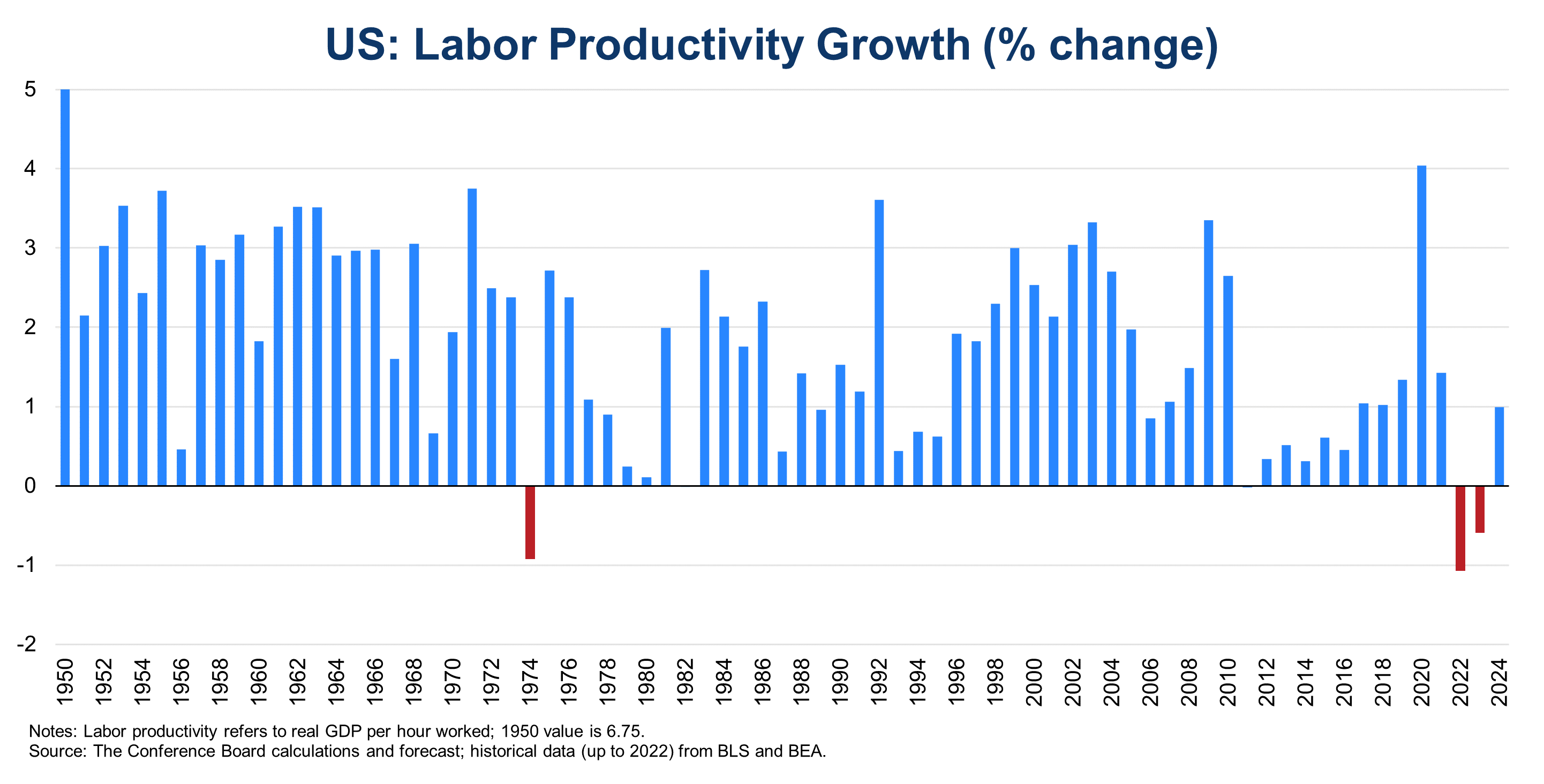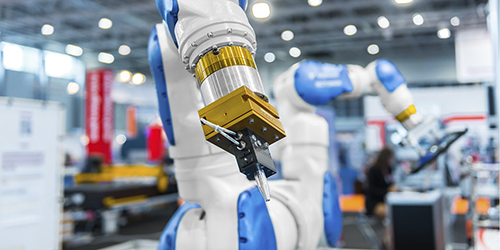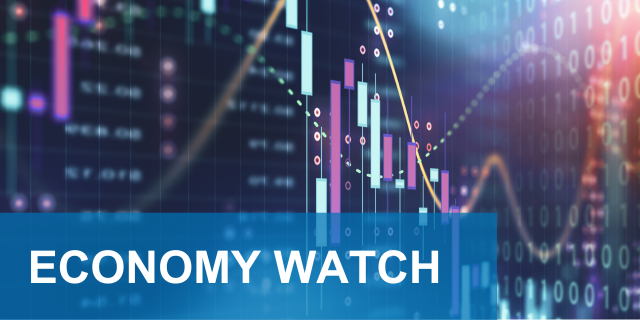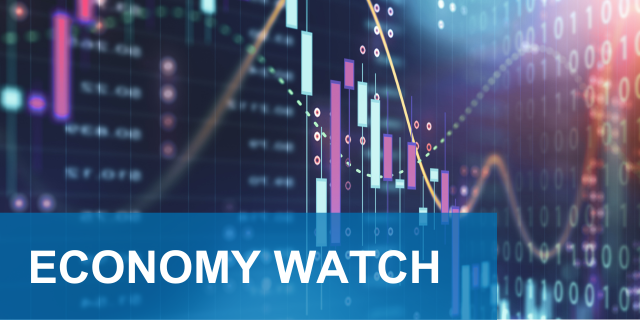Slower US Labor Productivity Points to Slower Economic Growth Ahead

- Authors:
-
Publication Date:
March 03, 2023
Labor productivity growth is often seen as the ultimate source of economic growth and improvement in standards of living. Therefore, recent weak readings of real GDP per hour worked in the US have become a cause for concern. After a steep rise in 2020, labor productivity growth moderated in 2021 and declined sharply in 2022, the second-worst decline in the post-WWII era. On the one hand, there may be more noise than a tangible signal in these data, given a labor market recovery that trailed the real GDP recovery, particularly in 2022. On the other hand, even if this noise is reduced, productivity did poorly in 2022. Labor productivity growth in 2023 is expected to stagnate given the expected recession later in the year and ongoing chronic labor market shortages. Labor productivity growth may return in 2024 and beyond; we project it to expand moderately at rates higher than those in the decade that preceded the pandemic.
-
Complimentary.















